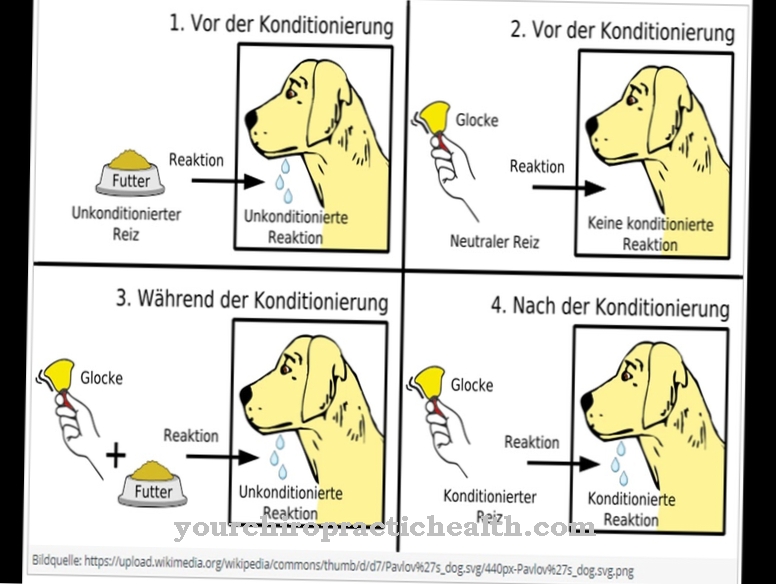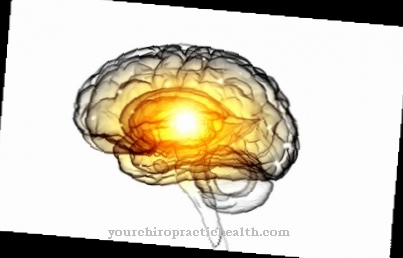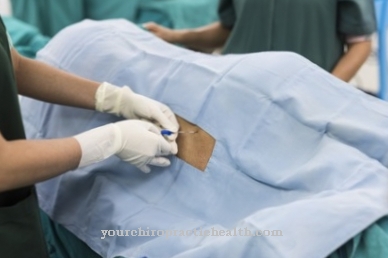A Bronchoscopy is an examination and treatment method that is used in human medicine. An endoscope is inserted into the bronchi, which enables the treating physician to make precise diagnoses or to perform certain interventions in this region. The procedure is comparatively gentle on the patient and is now usually performed without anesthesia.
What is a bronchoscopy?

Under one Bronchoscopy Medical professionals understand the insertion of an endoscope into the human bronchi for diagnostic or treatment purposes.
This procedure has been known since the end of the 19th century, although initially it was only used to remove foreign bodies. In bronchoscopy, a thin tube (the so-called endoscope) is pushed over the nose or mouth, over the windpipe and into the bronchi. A camera can then be inserted and an exact picture of the condition of the bronchi can be obtained.
Tissue samples can also be taken in this way. While rigid endoscopes were primarily used in the past, medicine today relies on flexible devices. These are more versatile and also more pleasant to use for the patient. Since the endoscopes only have a diameter of 2-3 mm, they can also be used with small children.
Function, effect & goals
A Bronchoscopy can be used for different purposes. In the case of diagnostic use, the procedure is carried out to assess the condition of the bronchi and / or to confirm or exclude a disease.
In particular, lung cancer (lung tumors) can be reliably detected in this way. A biopsy, which is a collection of tissue, can also help diagnose various diseases. For this purpose, the smallest surgical instruments are inserted into the bronchi via the endoscope, which are operated from outside by trained medical professionals. These instruments are also used when bronchoscopy is performed for therapeutic purposes.
For example, foreign objects that have been accidentally inhaled can be removed (this is more common in young children). Growths such as the so-called blood sponge can also be removed with the help of bronchoscopy without much effort.
If the patient is being artificially ventilated, the position of the necessary tube can be corrected as part of a bronchoscopy. The thin endoscope can also be easily inserted during artificial ventilation and then removed again. The bronchi can also be flushed through the endoscope if this is necessary due to excessive mucus formation.
If there is cancer in the area of the lungs / bronchi, bronchoscopy can also be used for local radiation therapy in order to increase the chances of recovery. Whether a rigid or a flexible endoscope is used for bronchoscopy depends on the individual application. Although flexible hoses are predominantly used in the meantime, a rigid endoscope may be necessary, for example to remove a foreign body, which is often difficult with a flexible hose.
Risks, side effects & dangers
The possible risks of a Bronchoscopy are primarily in the risk of injury to the patient. The use of rigid endoscopes in particular causes injuries to the sensitive mucous membrane again and again, since even with very careful use it can hit it and cause damage.
The result is bleeding that can be more or less severe. Spasmodic reactions of the airways or the larynx can also be triggered by bronchoscopy, especially with a rigid device. When using flexible endoscopes, however, the risk of injury is rather low. In addition, the use of rigid endoscopes, which also have a larger diameter than their flexible variants, is found to be very uncomfortable by the patients.
For this reason, bronchoscopies with rigid endoscopes are always performed under anesthesia. This harbors certain risks, especially for patients with a previous illness, but anesthesia is always a burden for completely healthy people, which should be avoided if possible. Basically, a bronchoscopy is nowadays a routine procedure that only leads to more serious complications in very rare cases.













.jpg)

.jpg)
.jpg)











.jpg)